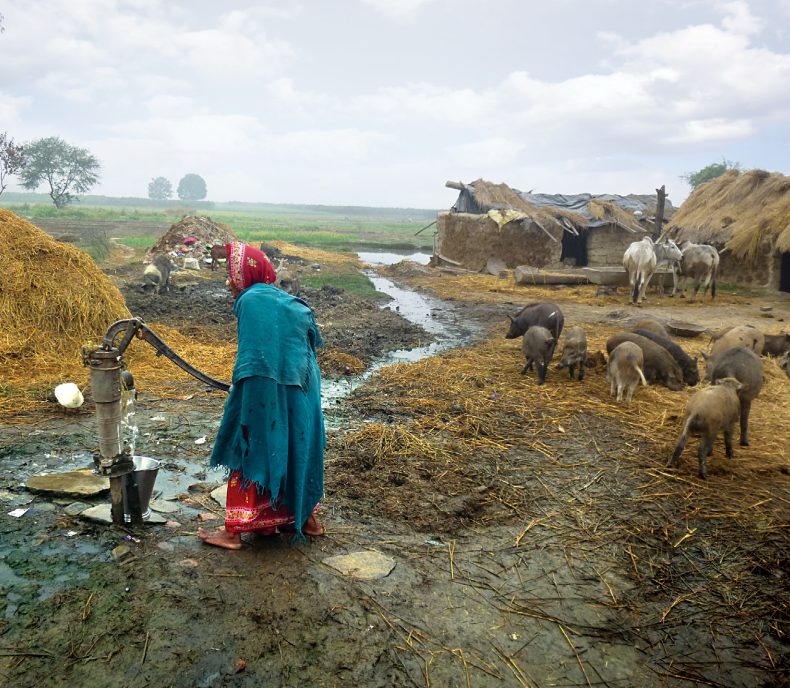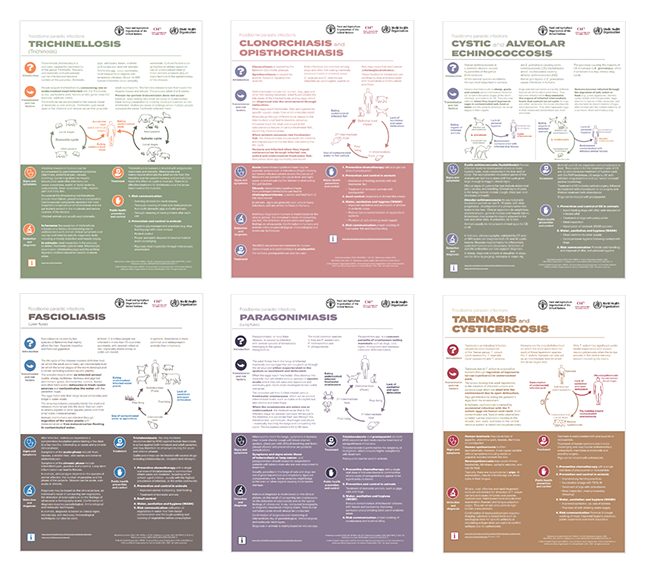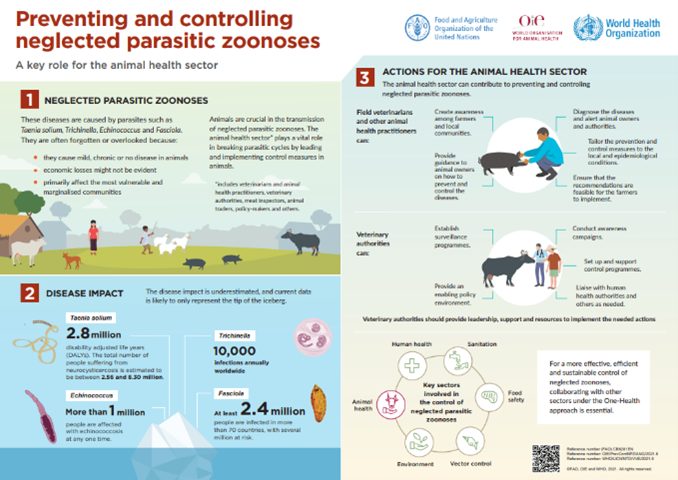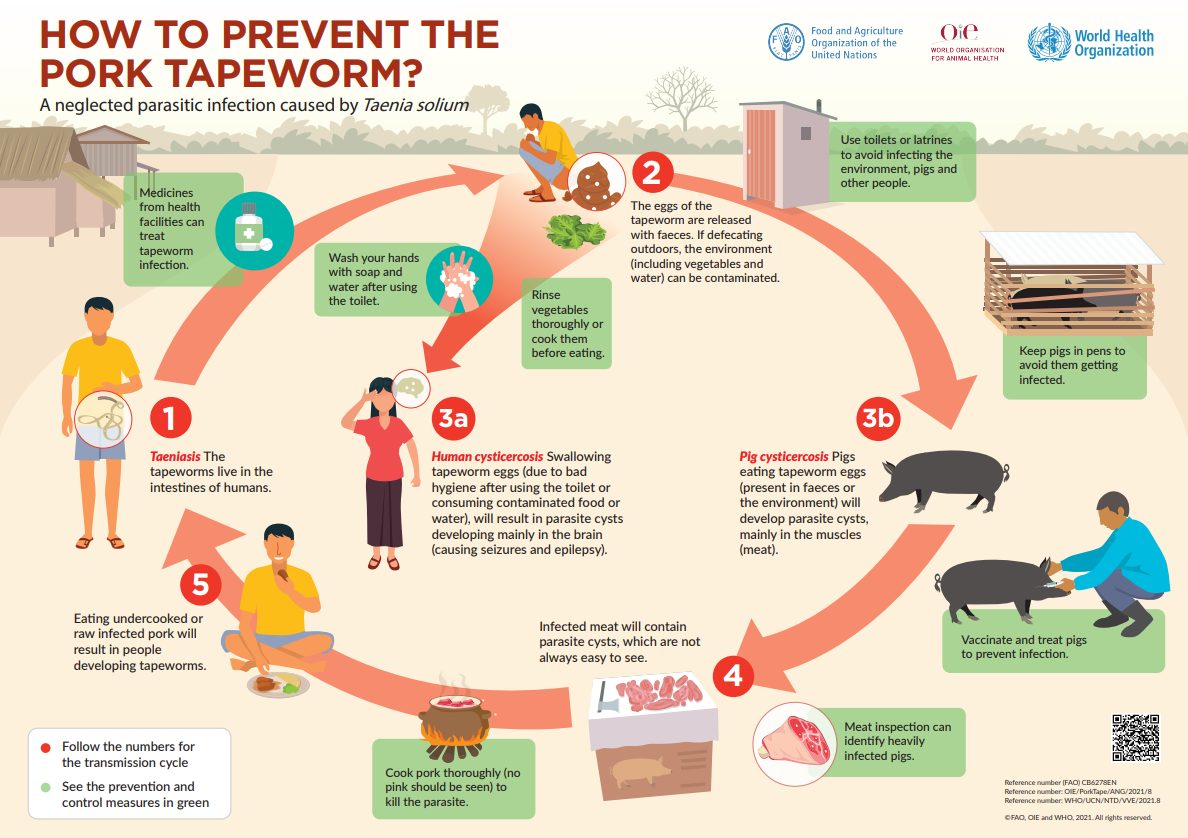


Paris (France), 21 January 2022 — As we continue to deal with the burden caused by the SARS-CoV-2 virus, with information pointing to the likelihood that this latest virus originated in animals, we must not lose sight of the burden caused by endemic parasitic zoonoses[1] which affect some of the most vulnerable populations.
Unlike emerging zoonoses, endemic zoonoses are by comparison, lesser known and are found predominantly in marginalized areas where people live in close proximity to animals. Creating awareness about endemic zoonoses can help, and working in an integrated manner – across sectors – can bring optimal results.
The Food and Agriculture Organization of the United Nations (FAO), the World Health Organization (WHO), and the World Organisation for Animal Health (WOAH, founded as OIE) are working together to promote cross-sectoral collaboration to address risks from zoonoses and other public health threats that exist or emerge at the human-animal-ecosystems interface.
Together they provide guidance on how to reduce these risks. This includes work towards enhancing multisectoral partnerships[2] at the country level. Multisectoral action seeks to ensure that vulnerable and often hard-to-reach populations in need are enabled to control and eliminate neglected parasitic zoonoses.
The Regional FAO, WHO, WOAH Tripartite in Asia and the Pacific region, has jointly developed a series of resources to promote multisectoral collaboration targeting public health practitioners, food safety and veterinary authorities, and other practitioners in Asia and the Pacific region, but the information is relevant in many other regions where these neglected zoonoses are present.
PUBLICATIONS
All the links listed below and additional links to resources for the prevention and control of neglected parasitic zoonoses published by the Tripartite organisations can be found here: https://rr-asia.woah.org/npz-resources
Relevant Global/ Regional Tripartite Links
WOAH:
FAO:
WHO:
[1] Includes diseases such as Chagas disease, cysticercosis, echinococcosis, clonorchiasis, opisthorchiasis, paragonimiasis, fascioliasis, schistosomiasis, trichinellosis, and leishmaniasis that are prevalent in many parts of the world.
[2] Outcome of a meeting convened jointly in October 2018 in Luang Prabang, Lao PDR, the Regional FAO, WHO, WOAH tripartite in Asia agreed to collaborate to enhance multisectoral partnerships.
Photo (Banner): Meritxell Donadeu






